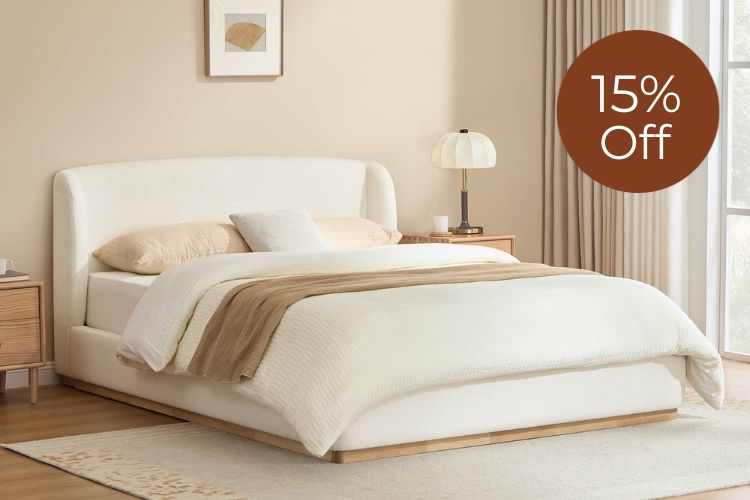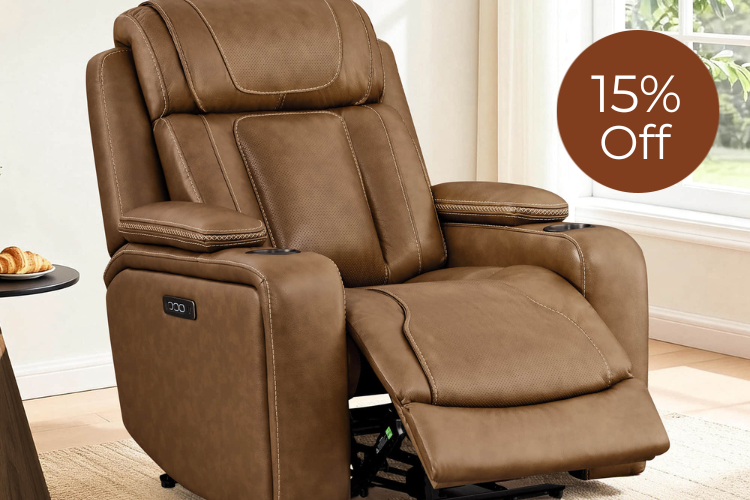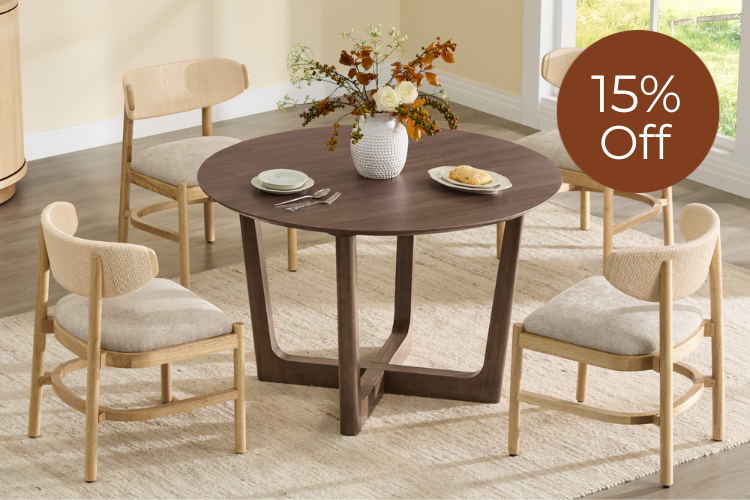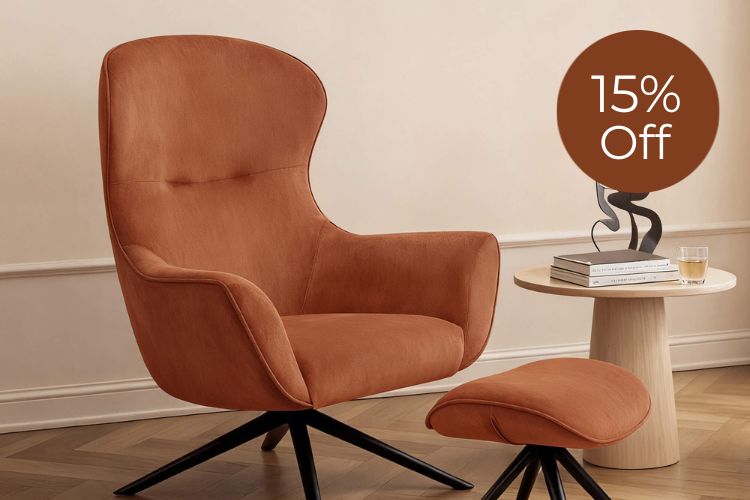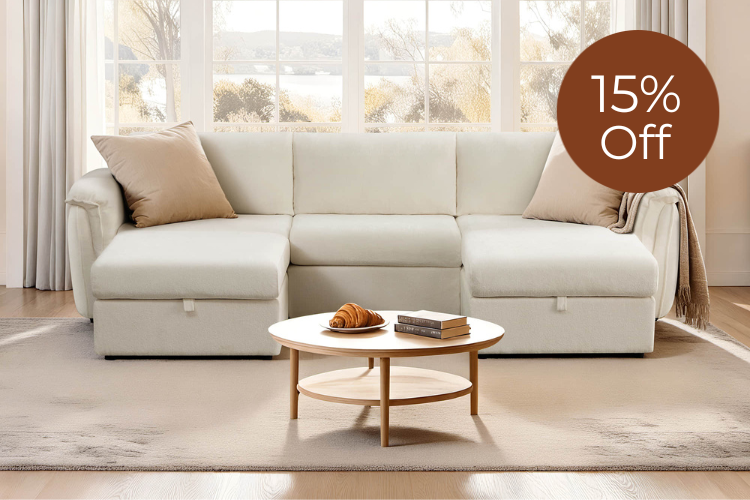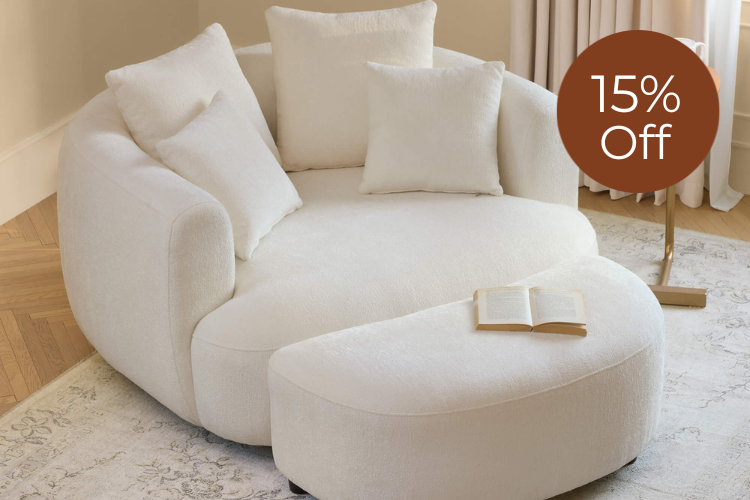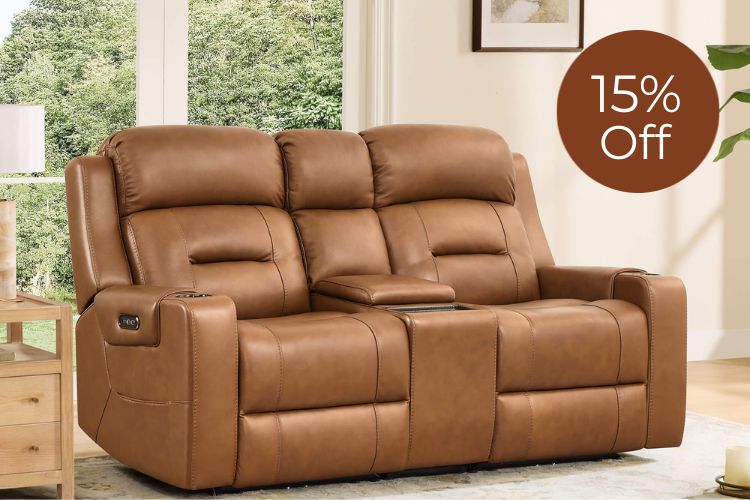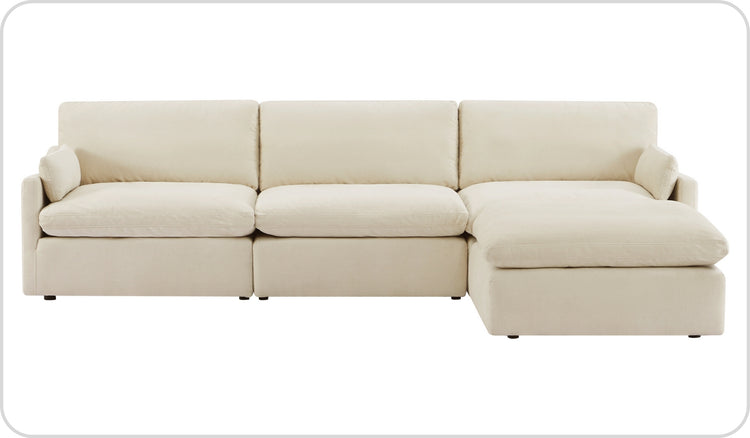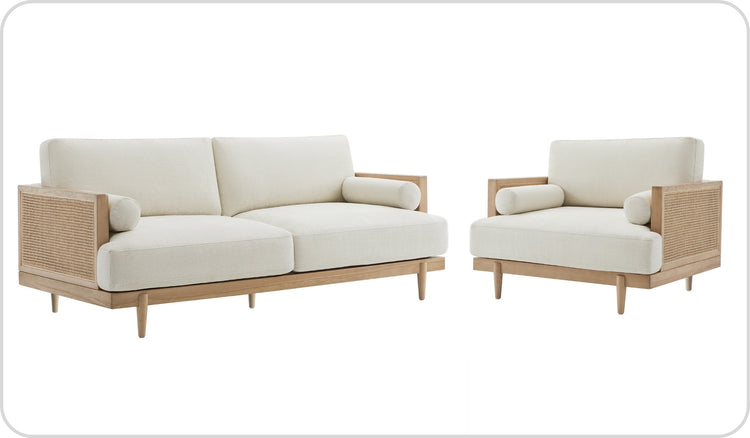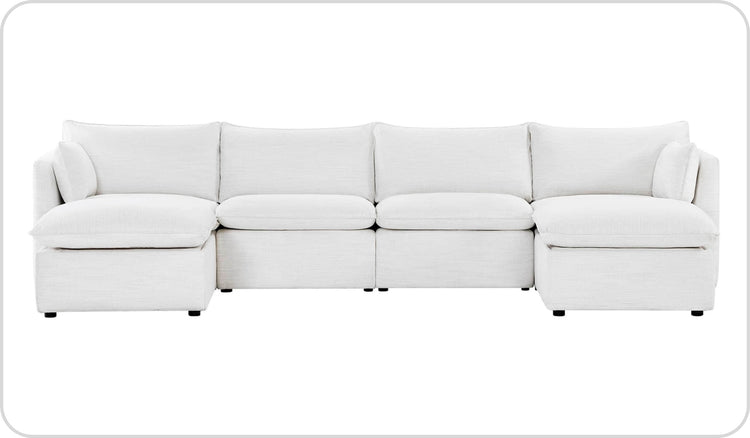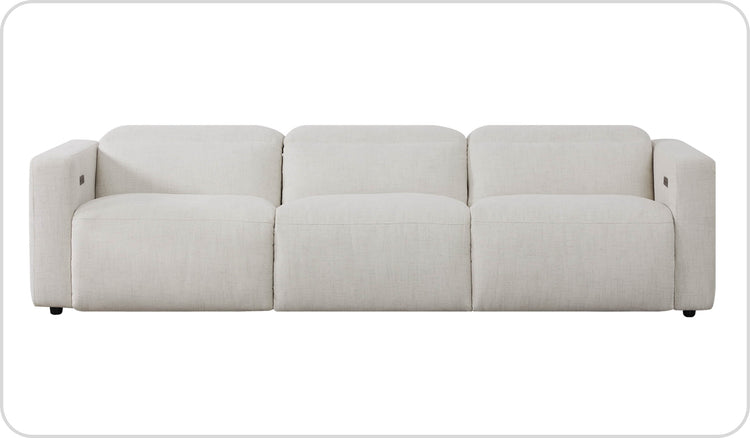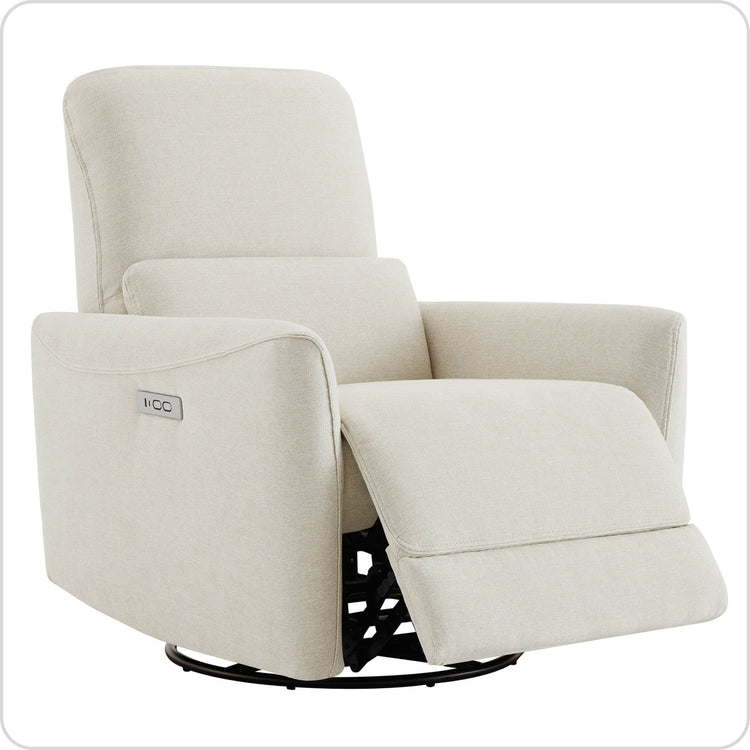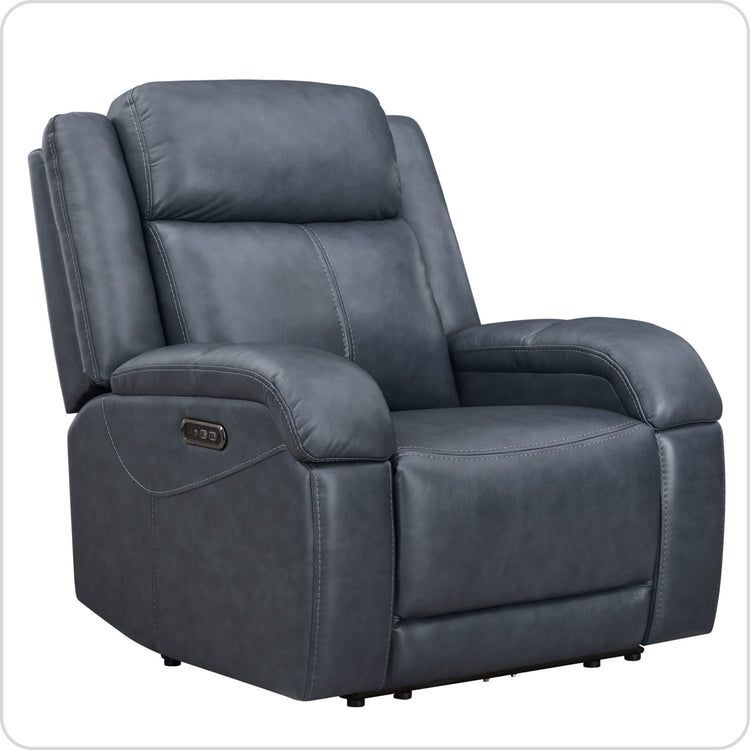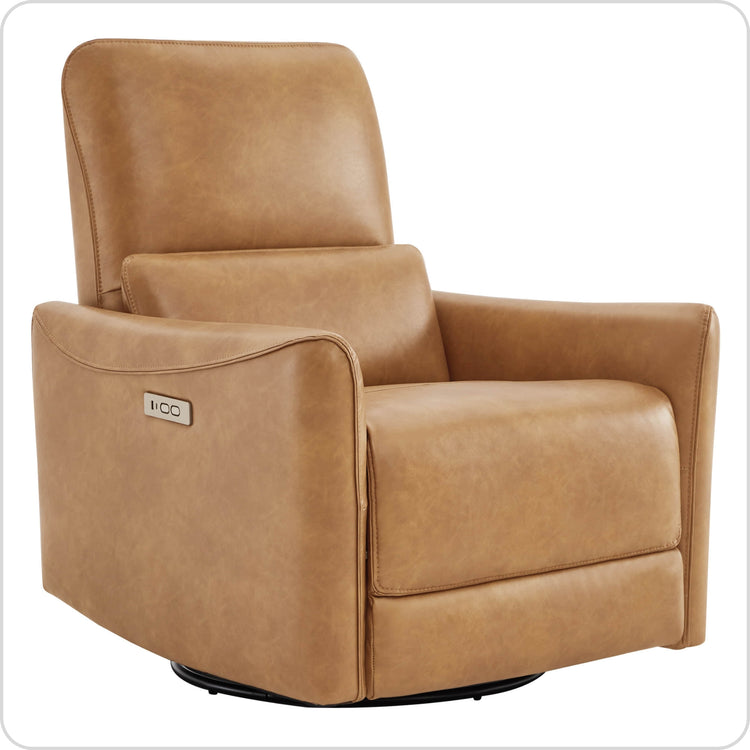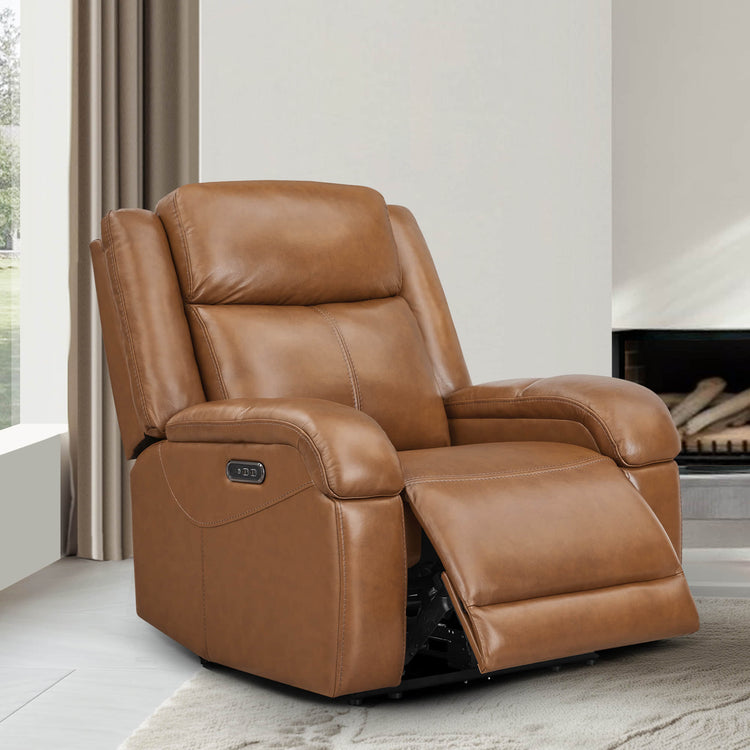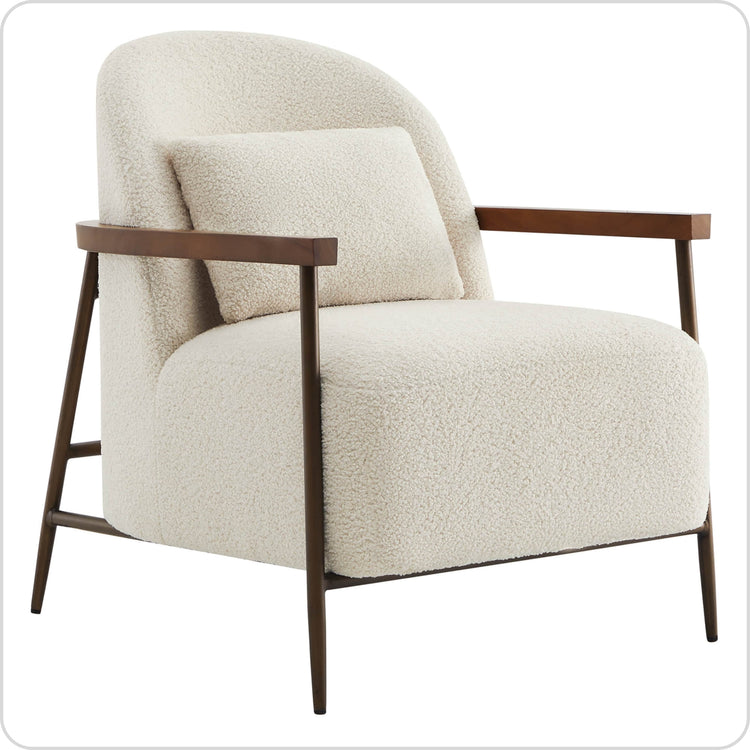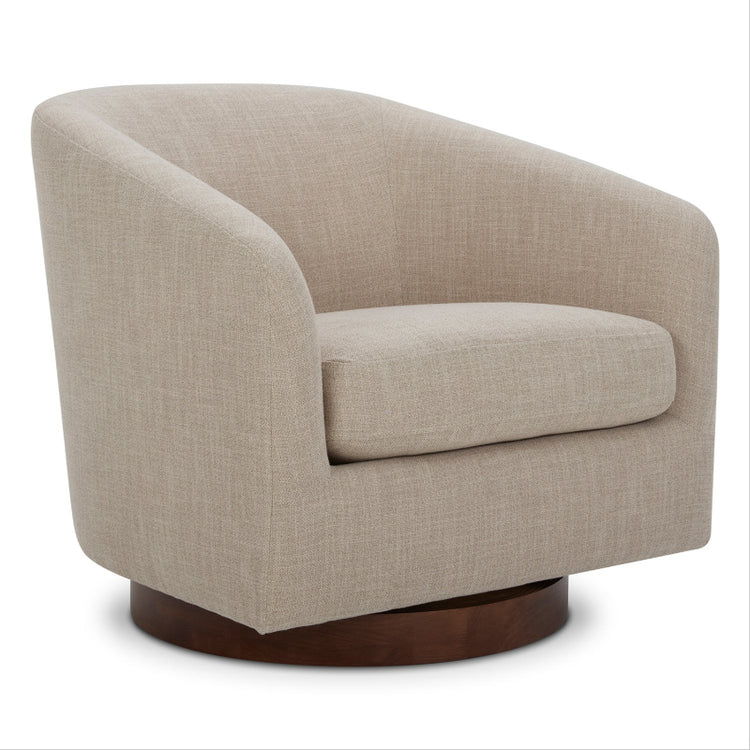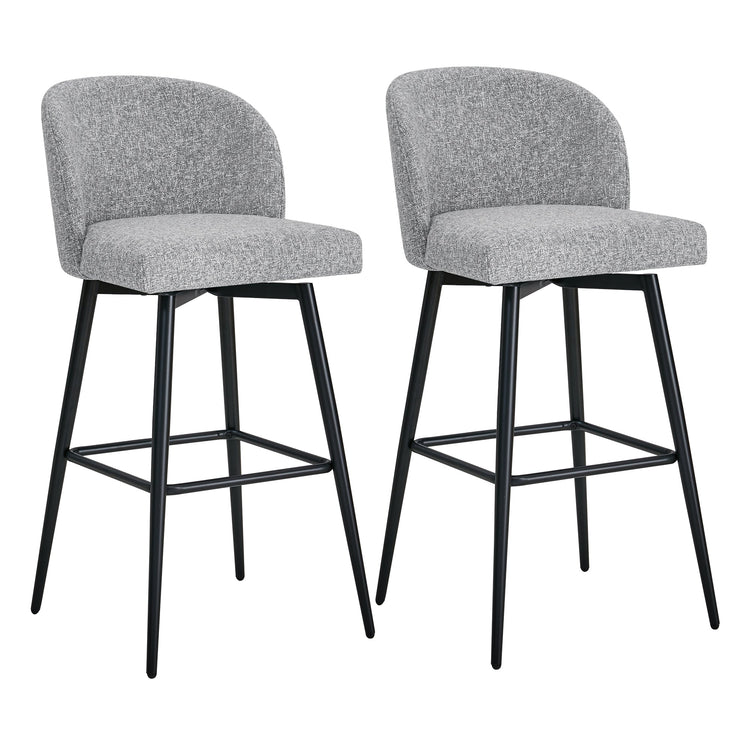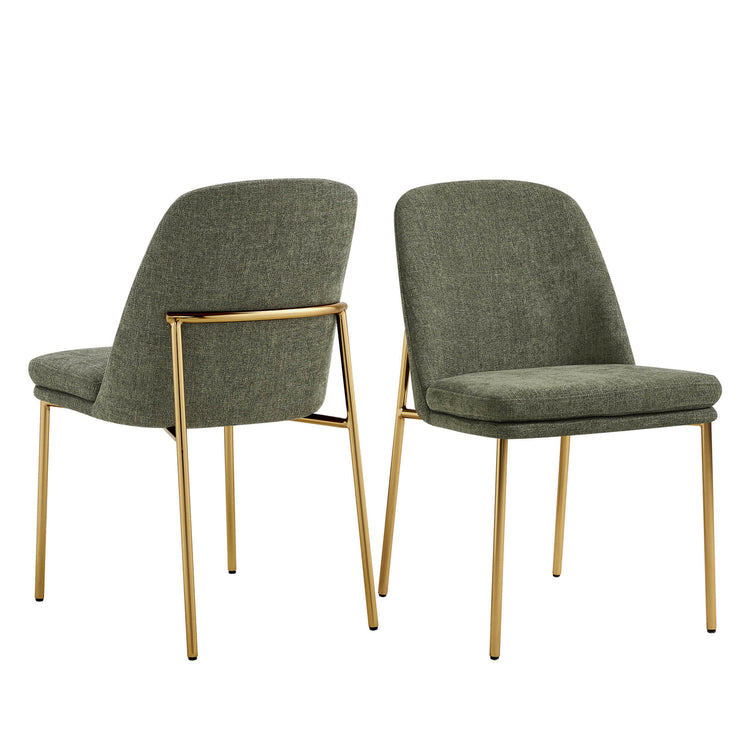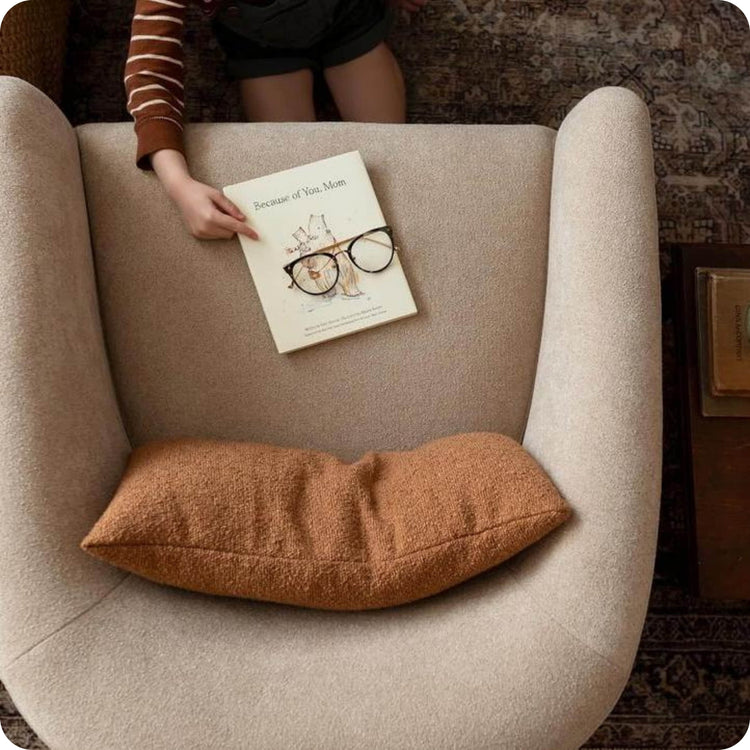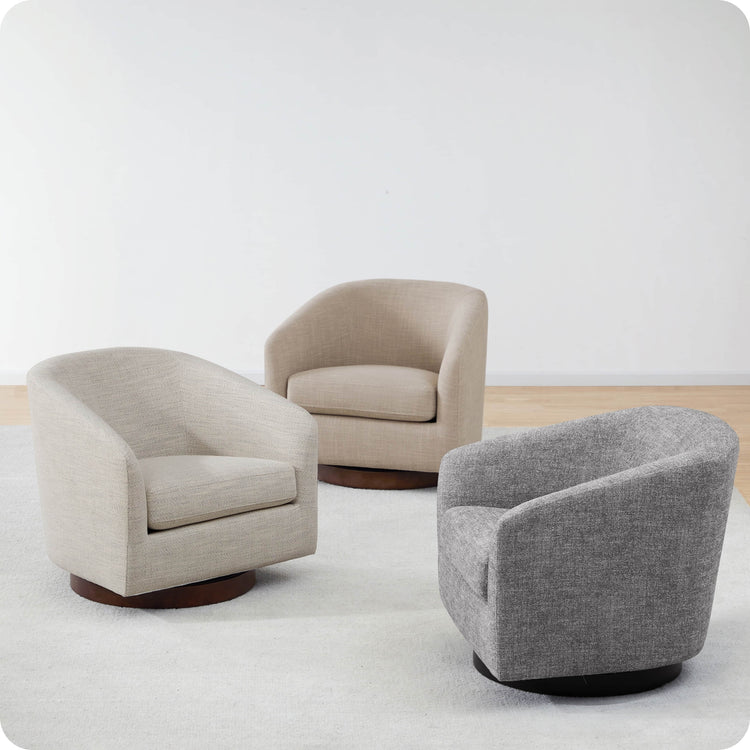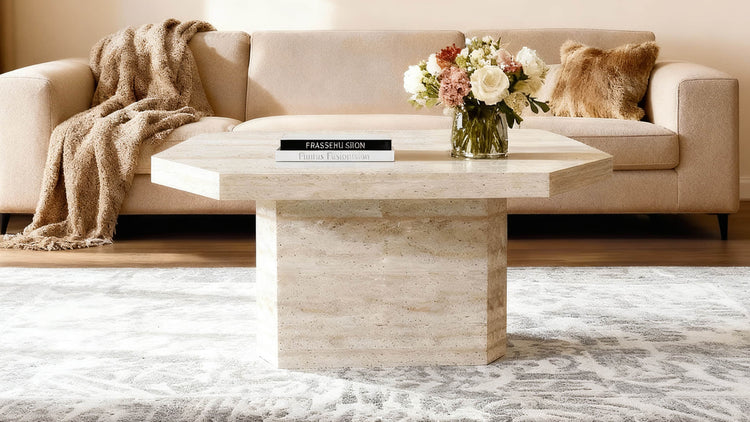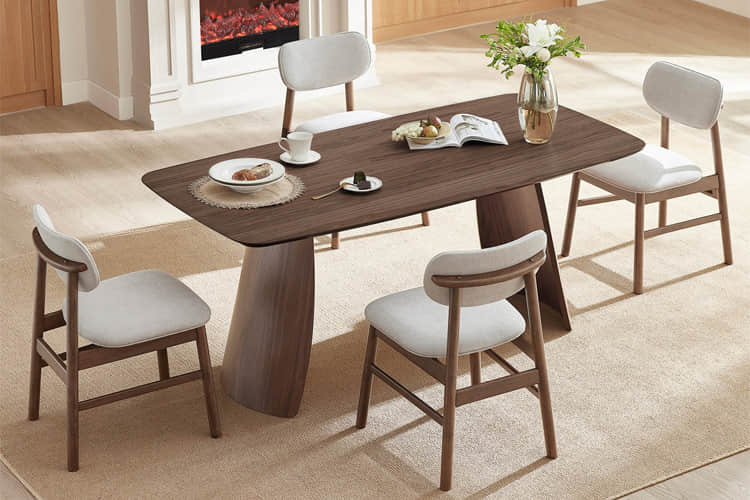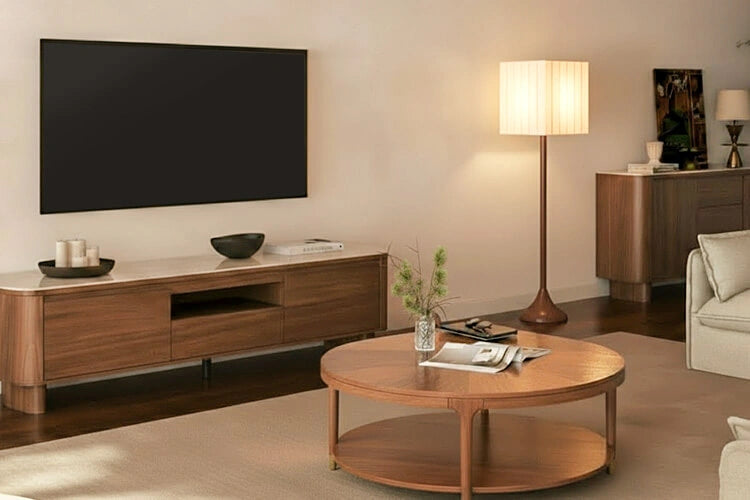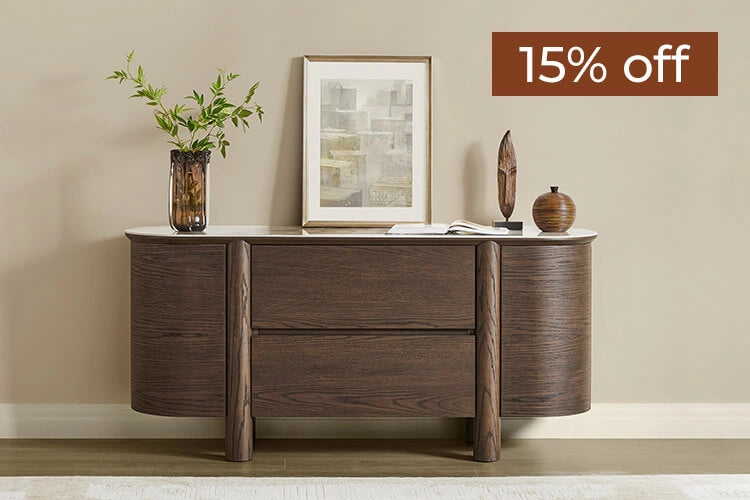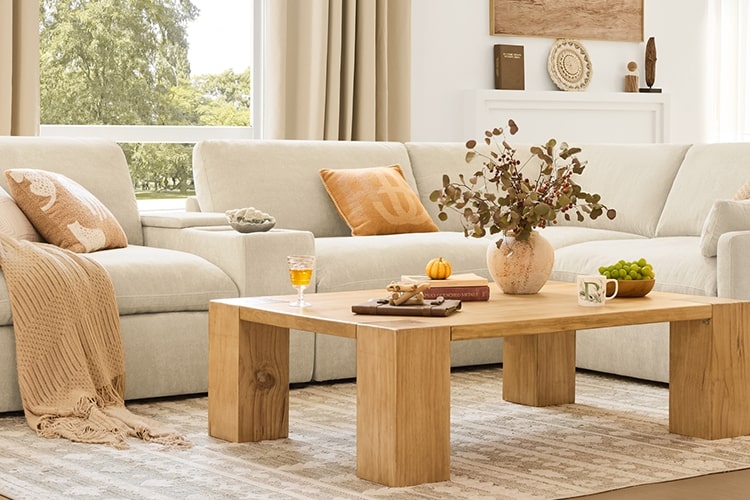Your sofa is the heart of your living room—the spot for movie nights, lazy Sundays, and catching up with friends. Choosing a new one is a huge decision. You're likely deciding between a classic, one-piece traditional sofa and a flexible modular that can grow and change with you. One offers a timeless look; the other offers custom-fit adaptability. The right choice depends on your space, your family, and your future plans. This breakdown will give you the information you need to choose confidently.
The Traditional Sofa: What to Know
For many people, the traditional sofa is the classic image of a living room couch. It's a single, complete piece of furniture with a fixed shape and a set number of seats—think of a standard two-person loveseat or a three-seater. Its simple, elegant design has made it a home staple for generations, acting as a strong anchor for any room's style.
Advantages of a Traditional Sofa
- A Unified, Polished Look: Because it's a single piece, a traditional sofa offers a very clean and cohesive look. There are no breaks in its silhouette, which creates a powerful statement. It easily becomes the focal point, with all other furniture arranged around it. This is great for creating a formal or carefully designed living room.
- Simple Shopping: Selecting a conventional sofa is typically an easy affair. You get exactly what you see in a showroom or on the internet. There aren't any intricate setups or discrete parts to measure. Simply choose a style you prefer and make sure the overall measurements match those of your room.
- Sturdy Feel and Structure: Many people find that traditional sofas are more durable since they are constructed on a single, continuous frame. The entire construction feels solid and cohesive since there are no disconnected pieces to join. A conventional sofa that is well-made can last for many years.
Potential Drawbacks of a Traditional Sofa
- Inflexible by Design: The greatest strength of a traditional sofa is also its biggest weakness: its fixed shape. It comes in one size, period. If you have an oddly shaped room, a tight corner, or need to fit a specific number of people, you might struggle to find a traditional sofa that's just right.
- A Challenge to Move: Anyone who has tried moving a full-sized sofa knows the struggle. Pivoting around tight corners and hauling it up stairs can be a huge hassle. For people in apartments, older homes with small doorways, or anyone who moves frequently, a traditional sofa can be a real burden.
- All-or-Nothing Repairs: With a single-piece sofa, damage affects the entire unit. A deep stain, a tear in the upholstery, or a broken spring compromises the whole thing. Repairs can be costly, and in some cases, a single accident means replacing the whole sofa, even if the rest of it is in perfect shape.
The Modern Flexibility of a Modular Sofa
Modular sofas have become very popular because they are so adaptable. Instead of being one solid piece, a modular is made from individual sections, or “modules.” These parts—like armless chairs, corner seats, chaises, and ottomans—can be arranged in almost any shape. You can connect them to create an L-shape for a cozy corner, a sprawling U-shape for a big family room, or even a pit sofa for movie nights.
The Pros of a Modular Sofa
- Custom-Fit for Any Space: You can build a sofa to sit in the center of an open-concept space, stretch along a long wall, or tuck neatly into an inconvenient corner. For odd layouts, this makes it an excellent problem-solver.
- Easy to Move and Set Up: Compared to a large, traditional sofa, a modular sofa is significantly simpler to transport. Because each part is lighter and smaller, it is easy to move up stairs or through confined spaces. For those who live in apartments or move frequently, this function is a significant plus.
- A Sofa That Changes with You: A modular sofa can adjust to fit your evolving needs. You can purchase additional pieces to increase the seats if you move to a larger home, or reconfigure the pieces to fit in a smaller space or even divide them up to use in other parts of your house if you decide to downsize.
- Simpler Repairs: With a modular sofa, damage is less of a hassle. You simply need to repair or replace that single piece if a spring breaks or a part becomes stained. By doing this, you can avoid the expense and hassle of purchasing a brand-new sofa.
The Cons of a Modular Sofa
- Sections Can Shift: A common worry is that the individual pieces will drift apart. While this can happen with lower-quality models, most good modular sofas use strong connectors (like hidden metal clips) to hold them securely. It's a good idea to check how the pieces connect before buying.
- A More Casual Look: The visible seams between sections create a more relaxed and casual style. While many modern designs are sleek, a modular sofa might not be the best fit for a very formal living room where a seamless, single-piece look is important.
- Potentially Higher Cost: Because they are designed to be versatile, some feature-rich modular sofas can cost more than a basic traditional one. For example, some modulars have luxury add-ons like built-in power recliners or advanced comfort features, which will increase the price but also provide a superior level of comfort and convenience.

The Ohana Modular Motion Sofa Collection, offering customizable configurations, zero-gravity reclining, and pet-friendly, OEKO-certified fabric, ensuring superior comfort and versatile design for a truly personalized and relaxed atmosphere.
A Direct Comparison: Modular vs. Traditional Sofas
So, which sofa is the right fit for your home? Here's how they stack up on key points:
Flexibility and Customization
The modular sofa wins here. You can arrange its sections to perfectly fit your room and your needs. A traditional sofa has a fixed shape, so you have fewer options.

Arrange and expand your living space effortlessly with Kenna Modular 4 Seat Sofa-Chaise Sectional, featuring an extra-wide 40.9" seat, CertiPur-US foam, non-slip legs for secure comfort, and durable, machine-washable covers, ensuring lasting style and easy upkeep.
Moving and Setup
Modular sofas are much easier to move. The separate, smaller pieces fit easily through tight doorways and up stairs. A traditional sofa is one large, heavy piece that can be very difficult to move.
Style and Appearance
A traditional sofa often looks more formal and polished. Its single, seamless frame creates a clean, classic look. A modular sofa's seams give it a more casual, relaxed feel.
Fitting into Tricky Spaces
Modular sofas are the clear choice for unusual rooms. You can build the exact shape you need to fit a tight corner or a long, narrow wall. Some modular styles even offer reclining sections with a wall-hugger feature—letting you enjoy a recliner without needing extra clearance behind the sofa. It’s a smart way to combine flexibility with comfort, even in tight spaces. A traditional sofa either fits, or it doesn't.

Customize your living space with the Oliver Wall-Hugger Motion Reclining Sectional Collection, offering flexible modular designs, power recline with minimal wall clearance, and adjustable headrests for ultimate comfort style in room.
Adapting Over Time
A modular sofa grows with you. You can add sections if you move to a bigger home or split it up for a smaller one. A traditional sofa's size and shape are permanent.
Maintenance and Repairs
Modular sofas are easier to maintain. If one section is stained or damaged, you only need to repair or replace that single piece. With a traditional sofa, damage to one area affects the whole thing.
Special Features
Modular sofas lead in modern features. You can find models where each seat reclines, sofas with zero gravity positions for ultimate comfort, or versions with electric footrests. Many are "wall-huggers," which can fully recline even when close to a wall. Traditional sofas typically have fewer of these advanced options.

Upgrade your living space with the Sophia Feather Modular Sofa Collection, offering customizable configurations, electric footrest, and luxurious feather-filled cushions for ultimate comfort and modern versatility in any home.
Making the Final Decision for Your Home
A sofa is a significant purchase, and choosing wisely will ensure your home, your family, and what you'll need in the next few years.
A traditional sofa is likely your best fit if:
- You own your home and don't plan on moving soon.
- You have a standard-shaped living room.
- You prefer a more formal, classic style and the clean look of a single piece of furniture.
A modular sofa is probably the right choice if:
- You rent or expect to move in the future.
- You have an awkward room layout, narrow hallways, or tight corners.
- You want the freedom to change your room's design or need a sofa that can grow with your family.
One final tip: Always measure first! Check the dimensions of your room, doorways, and stairwells to make sure your new sofa will fit without any problems.
Modular Sofas vs. Traditional Sofas FAQs
Q1: Can I add new sections to my modular sofa years later?
This depends entirely on the manufacturer. It is simple to add matching portions later on because some businesses maintain their modular collections in production for many years. After a few seasons, some people could stop wearing certain styles. It's preferable to purchase from a well-known brand and inquire about their policy on the continuation of their product lines if you anticipate wanting to expand your sofa in the future.
Q2: Are traditional sofas more comfortable?
Comfort has nothing to do with whether a sofa is modular or traditional. The frame, the suspension system (such as springs or webbing), and the cushion filling (foam, feathers, or a hybrid) all have an impact on how well it works. There is a vast array of comfort levels for both traditional and modular sofas, ranging from sink-in soft to extra-firm.
Q3: Is it harder to clean a modular sofa?
In fact, it may be simpler. To vacuum thoroughly in all the nooks and crannies where dust and crumbs lurk, you might divide the sections. A major benefit is that you might just need to get a new cover for that one piece rather than the complete sofa if your sofa has detachable slipcovers and one area is permanently stained.

